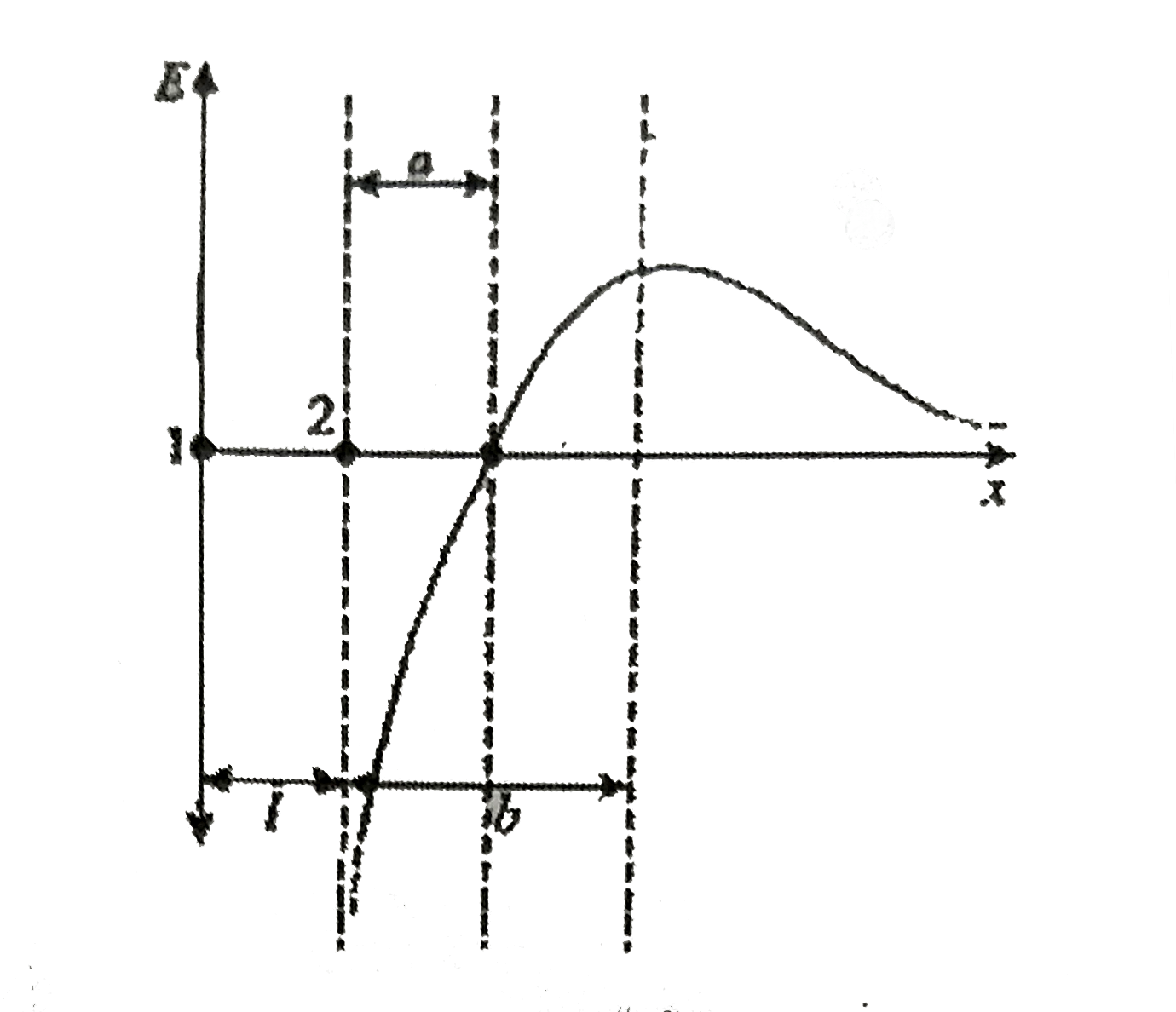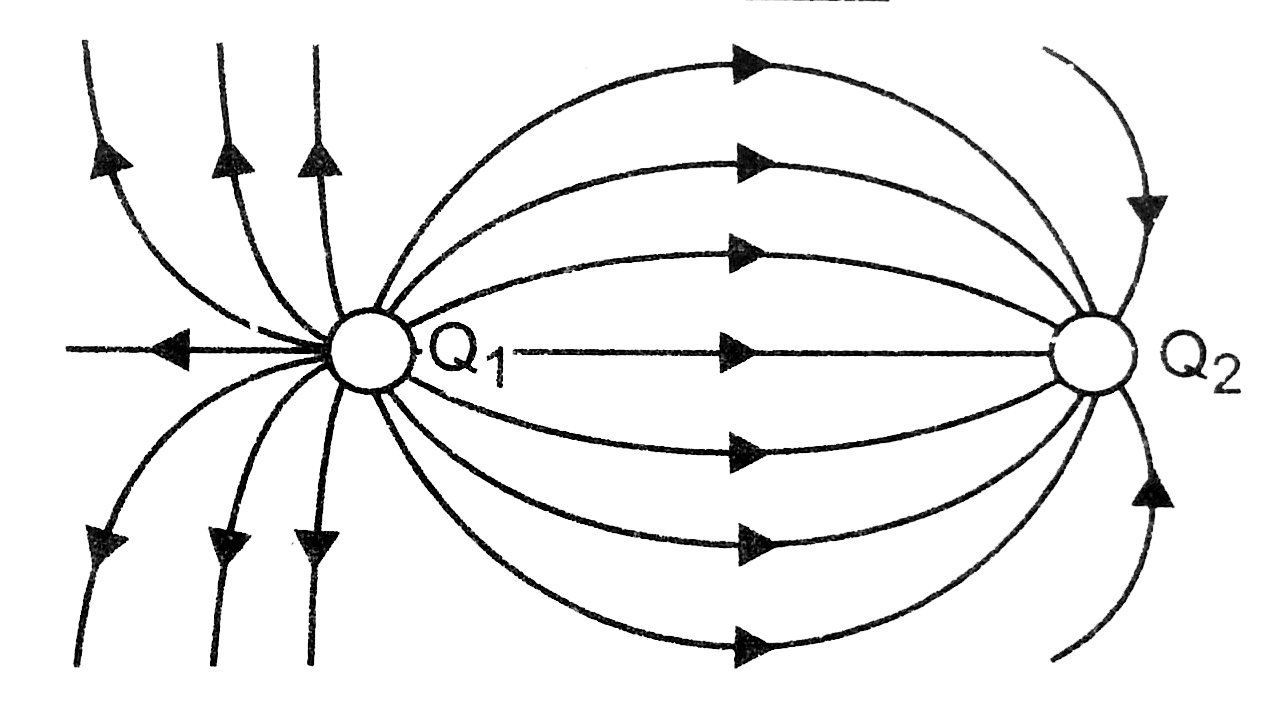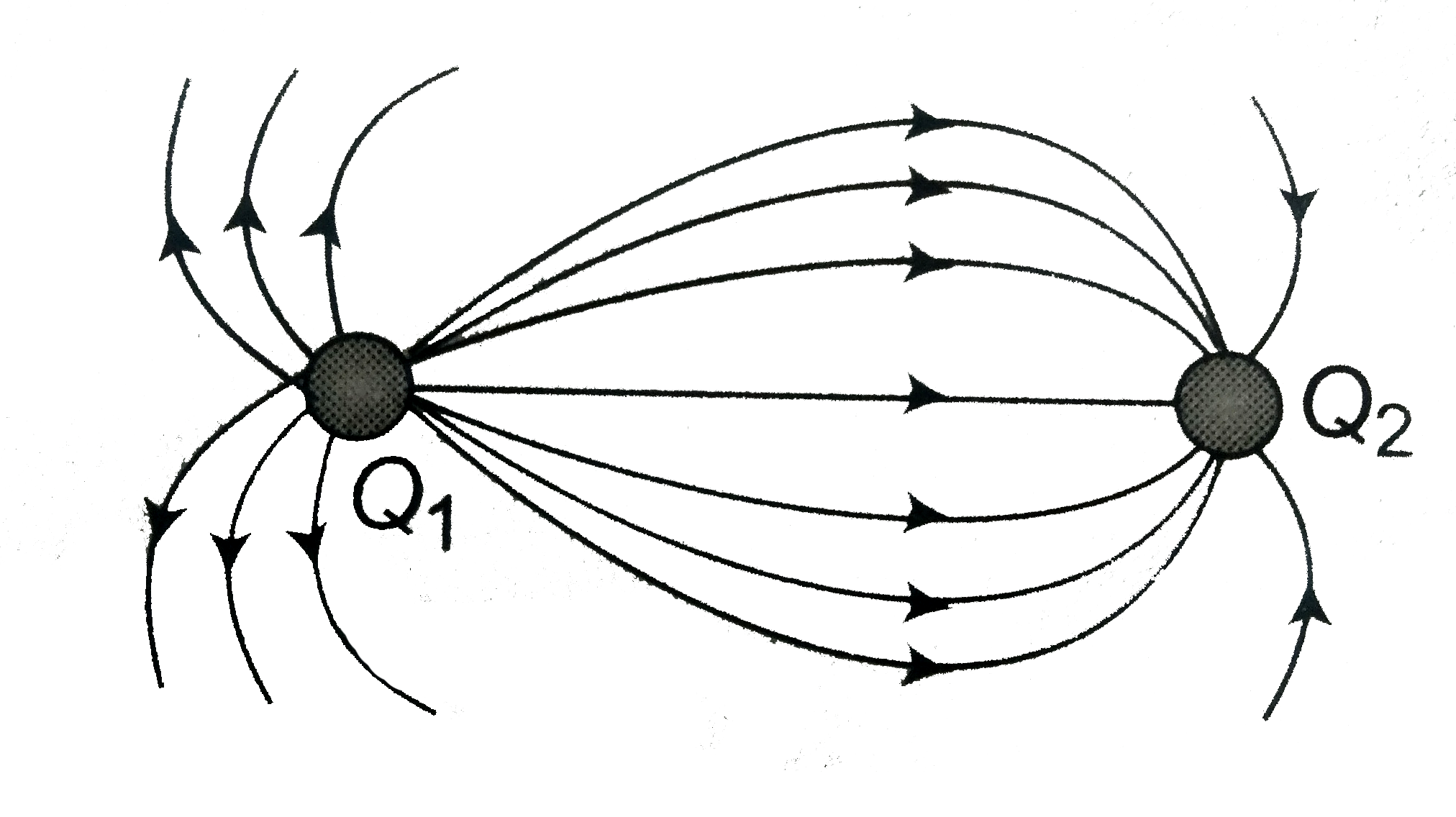What is the ratio of the charges ∣∣∣q1q2∣∣∣ for the following electric field line pattern?

15
2511
5
1125
The correct Answer is:D
Similar Questions
Two point charges Q1 and Q2 are positioned at points I and 2. The field intensity to the right of the charge Q2 on the line that passes through the two charges varies according to a law that is represented in the figure. The field intensity is assumed to be positive if its direction coincides with the positive direction on the x-axis. The distance between the charges is l.

(a) Find the sign of each charge
(b) Find the ratio of the absolute values of the charges ∣∣∣Q1Q2∣∣∣
(c) Find the value of b where the field intensity is maximum
[(a) Q2 is negative and Q1 is positive (b) (l+aa)2, (c) l(l+aa)2/3−1⎤⎥ ⎥ ⎥⎦View SolutionA few electric field lines for a system of two charges Q1andQ2 fixed at two different points on the X-axis are shown in Fig.

(i) what is the nature of charges ?
(ii) which one of the two is bigger ?
(iii) What is the ratio of magnitude of two charges ?
(iv) Where can the electric field due to two charges be zero ?View Solution
Knowledge Check
- Question 1 - Select One
Assertion: Four point charges q1,q2,q3 and q4 are as shown in Fig,The flux over the shown Gaussians surface depends only on charges q1 and q2
Reason:Electric field at all points on Gaussians surface depends on any charges q1 and q2
 ABoth (A) and (R) are true and 'R' is the correct explanation of A.BBoth A and R are true and R is not the correct explanation of AC(A) is true but (R) is falseD(A) is false but (R) is true
ABoth (A) and (R) are true and 'R' is the correct explanation of A.BBoth A and R are true and R is not the correct explanation of AC(A) is true but (R) is falseD(A) is false but (R) is true - Question 2 - Select One
A few electric field lines for a system of two charges Q1 and Q2 fixed at two different points on the x-axis are shown in the figure. These lines suggest that
(i) |Q1|>|Q2|
(ii) |Q1|<|Q2|
(iii) At a finite distance to the left of Q1 the electric field is zero
(iv) At a finite distance to the right of Q2 the electric field is zero
 A(i),(iii)B(i),(iv)C(ii),(iii)D(ii),(iv)
A(i),(iii)B(i),(iv)C(ii),(iii)D(ii),(iv) - Question 3 - Select One
Two charge Q1=18μC and Q2=−2μC are separted by a distance R, and Q1 is on the left off Q2. The distance of the point where the net electric field is zero is
Abetween Q1 and Q2Bleft of Q1atR/2Cright of Q2 at RDright of Q2 at R/2
(a) An electric dipole of dipole moment →p is placed in a uniform electric field →E at an angle θ with it. Derive the expression for torque (→τ) acting on it. Find the orientation of the dipole relative to the electric field for which torque on it is (i) maximum, and (ii) half of maximum.
(b) Two point charges q1=+1μC and q2=+4μC are placed 2 m apart in air. At what distance from q1 along the line joining the two charges, will the net electric field be zero ?View SolutionA few electric field lines for a system of two charges Q1 and Q2 fixed at two different points on the x-axis are shown in the figure. These lines suggest that
(i) |Q1|>|Q2|
(ii) |Q1|<|Q2|
(iii) At a finite distance to the left of Q1 the electric field is zero
(iv) At a finite distance to the right of Q2 the electric field is zero
 View Solution
View SolutionTwo charge Q1=18μC and Q2=−2μC are separated by a distance R, and Q1 is on the left of Q2. The distance of the point where the net electric field is zero is
View SolutionThe point charges Q and −2Q are placed at some distance apart. If the electirc field at the location of Q is E, the electric field at the location of −2Q will be
View SolutionThe point charges Q and −2Q are placed at some distance apart. If the electirc field at the location of Q is E, the electric field at the location of −2Q will be
View Solution

